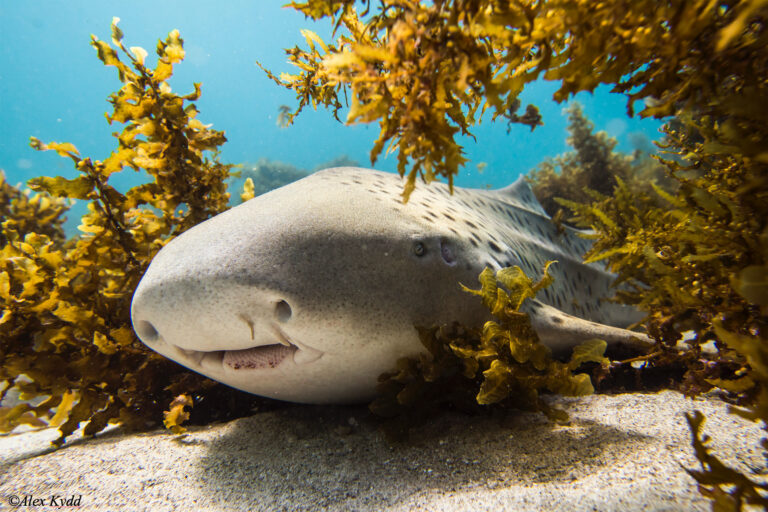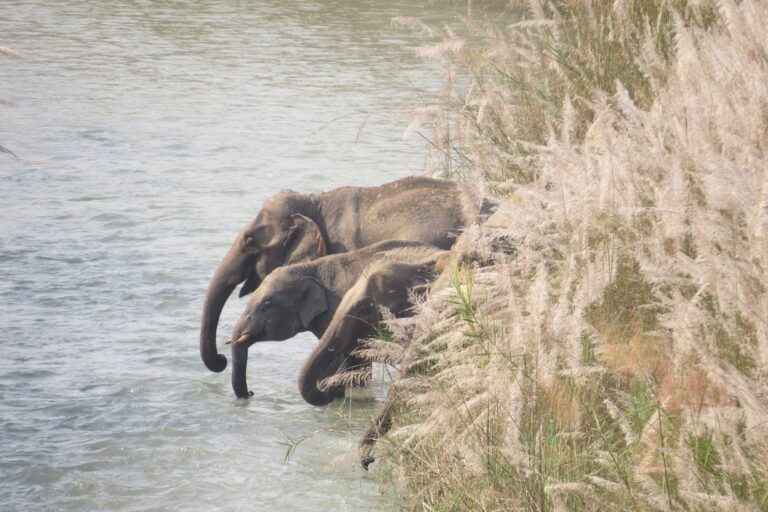- Fishing cats in Nepal are often misunderstood and mistaken for leopards or blamed for fish losses, leading to retaliation and conflict with fish farmers.
- Surveillance measures like CCTV and myths have fueled fear and misinformation, despite little evidence showing fishing cats as major threats to aquaculture.
- A conservation initiative called “fish banks” tried to reduce conflict by compensating farmers with fish instead of money but had mixed results and eventually lost funding.
- Experts emphasize the need for science-based conservation, better population data and public education to protect fishing cats and promote coexistence in human-altered landscapes.
KAPILVASTU, Nepal — At his fish pond near his home in Krishnanagar Municipality in western Nepal’s Kapilvastu, Imtehaj Khan closely watches a large TV screen mounted on a wall.
For outsiders, it would seem that the 58-year-old enjoys watching sports such as football or cricket on the big screen. But for the resident of Krishnanagar, located around 415 kilometers (258 miles) west of the capital Kathmandu, near the border with India, that is hardly so.
“The TV screen shows live footage from different sections of my pond,” about 0.7 hectares (1.7 acres), Khan told Mongabay recently. “I am always on the lookout for animals such as fishing cats (Prionailurus viverrinus) that prey on fish,” Khan said.
With its habitat now confined to small pockets in and around protected areas in the southern plains, such as Koshi Tappu, Chitwan, and Bardiya, the cat often comes into conflict with fishery owners, as these areas overlap with major aquaculture zones. This, researchers say, stokes suspicion, spawns myths and triggers surveillance imperiling an already vulnerable species.

“Some time back, I saw some dead fish in my pond,” Khan said, adding that he suspected a common leopard may have attacked and killed the fish. That prompted him to take up the drastic measure of placing the whole pond under surveillance.
According to IUCN, the global conservation authority, fishing cats survive in Bangladesh, Cambodia, India, Myanmar, Nepal, Pakistan, Sri Lanka and Thailand. They are believed to have gone extinct in Indonesia and Vietnam. According to its estimates, between 3,194 and 7,527 individuals survive in the wild, most of them in India, Bangladesh and Sri Lanka. In Nepal, where there is lack of adequate research, the population is estimated to be around a few hundred, concentrated around protected areas and fish ponds around them.
Ponds such as Khan’s dot Kapilvastu, the historic homeland of Siddhartha Gautama. Since 2015, the fish farming area here has nearly doubled from 700-1,200 hectares (1,730-2,965 acres), transforming the landscape into a patchwork of human-made wetlands suitable for fishing cats.
Among local fishers, the fishing cat’s reputation precedes it, often unfairly. Rumors of night raids and voracious appetites circulate quickly, inflaming tensions despite limited evidence of significant fish loss.

Around three years ago, a fishing cat was killed in the Bahadurganj area of Kapilvastu after farmers found it eating fish, according to local residents, who didn’t want to be named, as killing fishing cats is against the law. When Mongabay inquired about it with local farmers, they said the animal was killed as people mistook it for a common leopard (Panthera pardus). Similarly, they also talked about the death of a fishing cat near a pond around eight years ago, after security guards attacked it for preying on fish.
IUCN also states that in most countries where the cats are found, fishing cats are killed in retaliation for perceived livestock losses. This, along with fragmentation of habitat, and an increase in pollution due to the expansion of commercial aquaculture, have increased challenges in their conservation.

“We thought that if we didn’t intervene, we could lose a lot of fish to the cats,” said Khan, who invested around 135,000 rupees ($1,000) in his private surveillance system.
Listening to calls from farmers such as Khan, forester and conservationist Ganesh Puri, who worked at the division forest office between 2017 and 2023, came up with the idea of “fish banks” to address the problem. “We used to receive calls from farmers saying that an animal is killing their fish,” Puri, who is now stationed in Sindhuli, around 500 km (310 mi) east of Kapilvastu, told Mongabay over the phone.
“After consulting experts, we set up camera traps and confirmed that a fishing cat was killing the fish.”
The idea was simple. Puri received a grant from the Mohamed bin Zayed Species Conservation Fund to create a fish bank under his Western Terai Fishing Cat Project. The community-run bank would compensate fishery owners who would lose their fish to the cats. But the compensation wouldn’t come in the form of cash, it would come in the form of fish. This would make farmers aware of the importance of fishing cats, and as compensation is guaranteed, they would not retaliate against or kill the fishing cats, Puri said.

Thanks to Puri’s awareness programs, farmers such as Khan learned about the existence of fishing cats. Before Puri’s program, they thought the animal consuming their fish was a common leopard. “He also told us about the ecological importance of fishing cats,” Khan added. In addition to this, fish farmers said they felt reluctant to kill the animal, as local folklore says that anyone involved in killing a cat shall suffer from neurological disorders and tremble.
But as the project ran out of funds and Puri was transferred to another office, it couldn’t be sustained. The fishing banks’ critics argue that while Puri’s intention was to promote the conservation of the cats, it may have sent a wrong message to some members of the community that the animal only eats fish, and to keep their fish safe, they need to kill the fishing cats.
Basanta Belbase, another fish farmer, said the fish bank could have had unintended consequences detrimental to the conservation of fishing cats in the area. “For example, before the idea of the fish bank came, I didn’t know that there were certain cats that eat fish,” he said. “Some members of the community may have perceived that fishing cats are the biggest enemies of farmers.”
The scientific message on this issue, however, is pretty clear. A recent study by Rama Mishra from the University of Antwerp, Belgium, and her team found that the fishing cats in Nepal are generalists when it comes to food and while they do eat fish, they rely more on mammals and birds.
The most common type of food they found in the scat was from mammals, which made up about 39% of what the cats had eaten. Birds were next at around 27%, followed by fish at about 15%. Reptiles and snakes came in at roughly 12%. Insects, amphibians, mollusks and crabs were found in much smaller amounts, each making up less than 4% of the total. The study also found evidence that fishing cats prey on domestic or farm animals such as chickens and livestock.
“Our study shows that fishing cats don’t rely entirely on fish for survival,” Mishra said. “Also, their density in Nepal has been found to be relatively low compared to other countries,” she added. In addition to this, the cats may actually be helping the fishery owners in an ecological sense by preying on other animals that may also consume fish, she said.
“We need to understand that fishing cats are not the only predators of fish in Kapilvastu,” said Humnath Bhattarai, vice chair of the Federation of Community Forestry Users Nepal (FECOFUN), Lumbini province. “I have seen with my own eyes snakes, birds and jackals prey on fish,” added Bhattarai, a member of the Laxmanghat community forest user group that also rears fish.

While the fish bank concept seemed to provide a quick fix to the complex relationship between farmers and cats, such quick fixes rarely work in conservation, Mishra said. “Any intervention in conservation needs to be based on science and informed by numbers,” she told Mongabay. To address the issue of human-fishing cat conflict, the first thing that needs to be done is to assess the population of the fishing cats in the area and their diet, which hasn’t been carried out, she said.
In addition to this, people need to be made aware that the fishing cats are their friends, not foes, as they perform important ecological functions and help keep the fish healthy, said Sagar Dahal, another fishing cat researcher.
When people understand the behavior and diet of fishing cats, they will likely become more tolerant toward them, he added. “Fishing cats prey on snakes and birds that feed on fish,” he said.
Meanwhile, after monitoring his pond for more than a month, Khan also discovered that it wasn’t just fishing cats that were eating his fish. Jackals were also doing it. “It’s all part of the ecosystem where one animal feeds on the other,” he added. “Now that we know this, we don’t retaliate against fishing cats,” he said.

Banner Image: According to IUCN, the global conservation authority, fishing cats survive in Bangladesh, Cambodia, India, Myanmar, Nepal, Pakistan, Sri Lanka and Thailand. Image by Cliff via Wikimedia Commons (CC BY 2.0).
‘More research leads to more awareness’: Q&A with fishing cat expert Rama Mishra
Fishing cat home range far bigger than previously thought, Nepal study suggests
Citations:
Mishra, R., Bertola, L., Leirs, H., Adhikari, S., Lamichhane, B. R., Subedi, N., Neupane, U., Kolipaka, S. S., Manandhar, P., Pradhan, S. M., Pageni, A., & de Iongh, H. H. (2025). More than fish: diet composition of fishing cats Prionailurus viverrinus in human-dominated landscape. Wildlife Biology, 2025, e01400. doi:10.1002/wlb3.01400
FEEDBACK: Use this formto send a message to the author of this post. If you want to post a public comment, you can do that at the bottom of the page.














